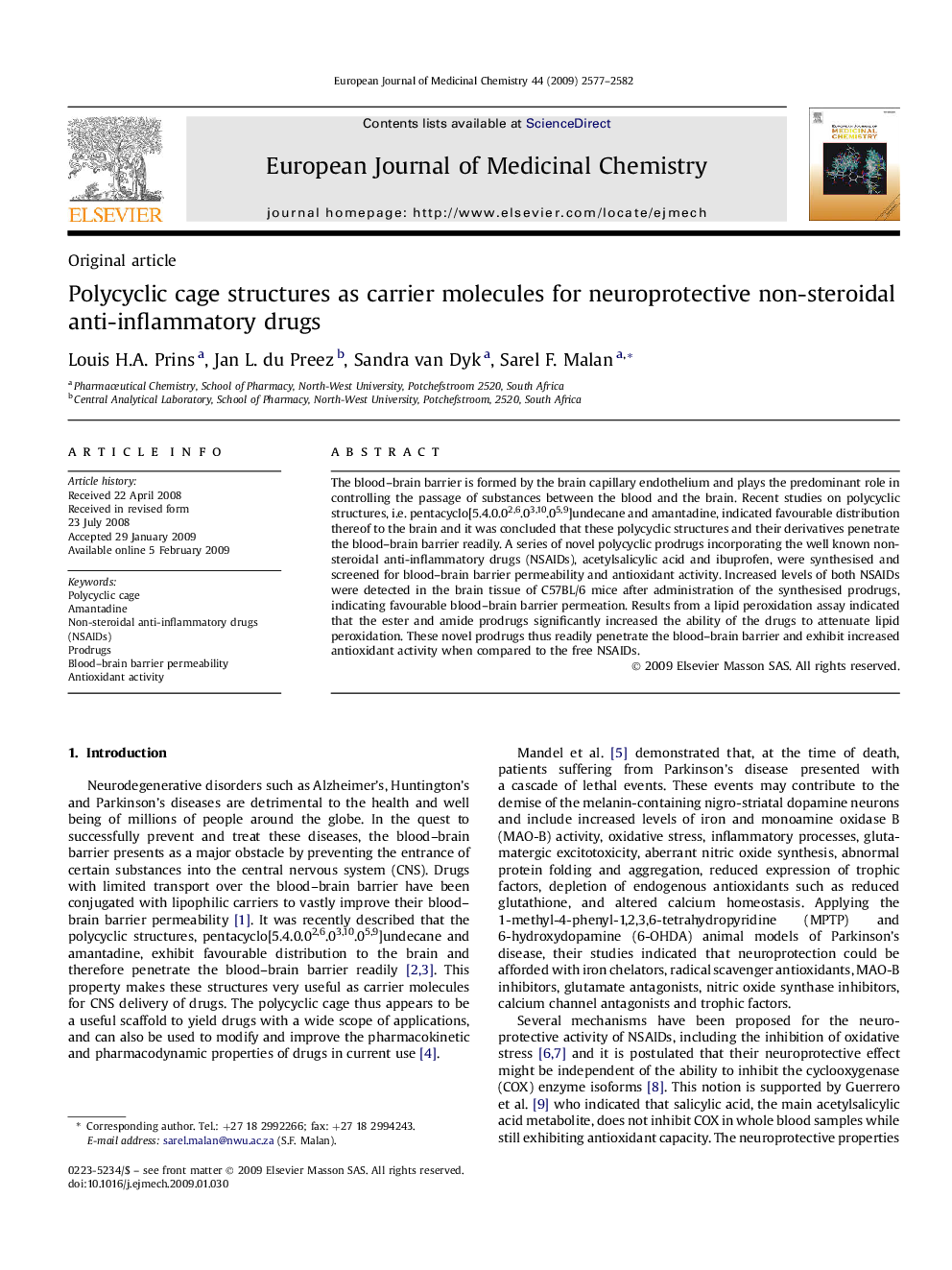| Article ID | Journal | Published Year | Pages | File Type |
|---|---|---|---|---|
| 1395057 | European Journal of Medicinal Chemistry | 2009 | 6 Pages |
The blood–brain barrier is formed by the brain capillary endothelium and plays the predominant role in controlling the passage of substances between the blood and the brain. Recent studies on polycyclic structures, i.e. pentacyclo[5.4.0.02,6.03,10.05,9]undecane and amantadine, indicated favourable distribution thereof to the brain and it was concluded that these polycyclic structures and their derivatives penetrate the blood–brain barrier readily. A series of novel polycyclic prodrugs incorporating the well known non-steroidal anti-inflammatory drugs (NSAIDs), acetylsalicylic acid and ibuprofen, were synthesised and screened for blood–brain barrier permeability and antioxidant activity. Increased levels of both NSAIDs were detected in the brain tissue of C57BL/6 mice after administration of the synthesised prodrugs, indicating favourable blood–brain barrier permeation. Results from a lipid peroxidation assay indicated that the ester and amide prodrugs significantly increased the ability of the drugs to attenuate lipid peroxidation. These novel prodrugs thus readily penetrate the blood–brain barrier and exhibit increased antioxidant activity when compared to the free NSAIDs.
Graphical abstractA series of novel polycyclic prodrugs incorporating the well known non-steroidal anti-inflammatory drugs (NSAIDs), acetylsalicylic acid and ibuprofen, were synthesised and screened for blood–brain barrier permeability and antioxidant activity.Figure optionsDownload full-size imageDownload as PowerPoint slide
